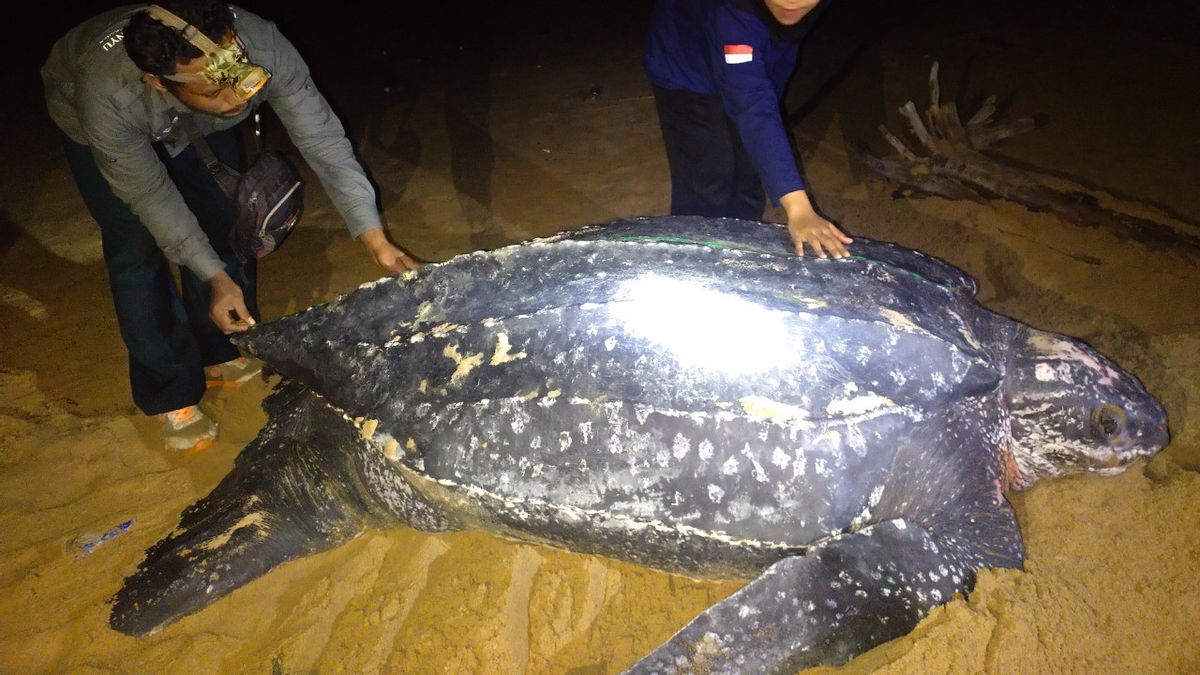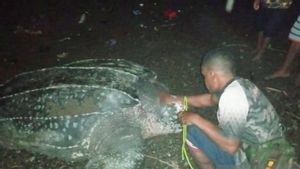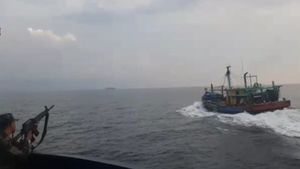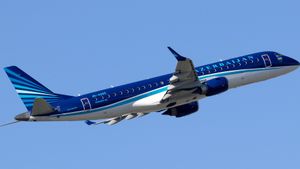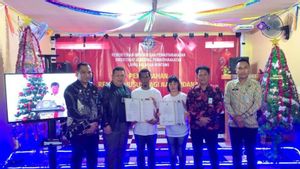JAKARTA - A leatherback turtle (Dermochelys coriacea) is quite large, appeared on the longest nesting coast in Indonesia in Paloh District, Sambas Regency, West Kalimantan Province.
This turtle has a carapace arch length of 174 cm, a carapace width of 114 cm, and a trail width of 194 cm. For information, this beach is very rarely visited by leatherback turtles. Usually, the blue turtles are seen a lot.
"The appearance of leatherback turtles as the largest turtles in the world is very rare and occurs on Paloh Beach, which is a turtle nesting site which is usually dominated by green turtles," said Acting Director General of Marine Spatial Management Pamuji Lestari in a written statement, Monday, September 27.
This leatherback turtle was found digging a hole to lay eggs on the coast of the Belacan River. Those who found it were enumerator officers from the Pontianak Coastal and Marine Resources Management Center (BPSPL), the Directorate General of Marine Spatial Management (Ditjen PRL), the Ministry of Marine Affairs and Fisheries (KKP), and fieldwork students (PKL) Marine Science Study Program, Tanjungpura University.
Paloh Beach, which has a length of 63 km, is included in a regional conservation area in accordance with the Decree of the Minister of Maritime Affairs and Fisheries Number 93 of 2020 concerning the Coastal and Small Islands Conservation Area (KKP3K) of Paloh and the Surrounding Waters in West Kalimantan Province.
"Turtles have a very important role in marine ecosystems. Their presence is an indicator of the health of the water. The appearance of this type of leatherback turtle with a characteristic carapace shaped like a starfruit is very rare, especially since the roaming route is very high between countries and even continents," he said.
SEE ALSO:
Tari also added that KKP3K Paloh and the surrounding waters which are conservation areas are able to increase the sustainability of the life of marine biota in the vicinity and must be managed better by referring to the Minister of Marine Affairs and Fisheries Regulation Number 31 of 2020 concerning Management of Conservation Areas and the Decree of the Director-General of Marine Spatial Management Number 28 of 2020 concerning Technical Guidelines for Evaluation of the Effectiveness of Conservation Area Management.
All types of turtles have been fully protected by the government through Government Regulation Number 7 of 1999 concerning Preservation of Plant and Animal Species. The status of the turtle is included in the red list of The International Union for Conservation of Nature (IUCN) and Appendix I of the Convention on International Trade in Endangered Species of Wild Fauna and Flora (CITES), therefore conservation efforts are needed in accordance with Government Regulation Number 60 of 2007 concerning Conservation of Natural Resources. Power of Fish and Circular Letter of the Minister of Maritime Affairs and Fisheries Number 526 of 2015 concerning Implementation of Protection of Turtles, Eggs, Body Parts, and/or Their Derivative Products.
Head of BPSPL Pontianak, Andry Sukmoputro said that as a form of protection and conservation of turtles, BPSPL Pontianak has carried out monitoring and data collection on turtle populations at the Paloh Turtle Nesting Beach since 2016 in collaboration with WWF Indonesia by conducting population data collection by enumerators and reporting the results every month.
"Based on information from the team in the field, the leatherback turtle, unfortunately, did not reach the laying phase, even though it had dug its body hole. The team has tried to minimize disturbances according to the monitoring SOP, but it seems that natural factors caused the turtles to not reach the egg-laying phase," he said.
In collecting data on turtles, enumerators involve local communities who are members of the Wahana Bahari Paloh community group and POKMASWAS Kambau Borneo. It is noted that more than 2,000 turtles land on the Paloh Peneluran Beach each year and are dominated by green turtles (Chelonia mydas).
Apart from green turtles, there were also hawksbill turtles (Eretmochelys imbricataI) and sea turtles (Lepidochelys olivacea) that landed. Until now, the number of turtles that have landed has reached more than 1,000 and is still dominated by green turtles. The incident with leatherback turtles landing alive and in clams (looking for a place to lay their eggs) is the first time this has occurred in 2021 at the Paloh Turtle Nesting Beach.
The English, Chinese, Japanese, Arabic, and French versions are automatically generated by the AI. So there may still be inaccuracies in translating, please always see Indonesian as our main language. (system supported by DigitalSiber.id)
